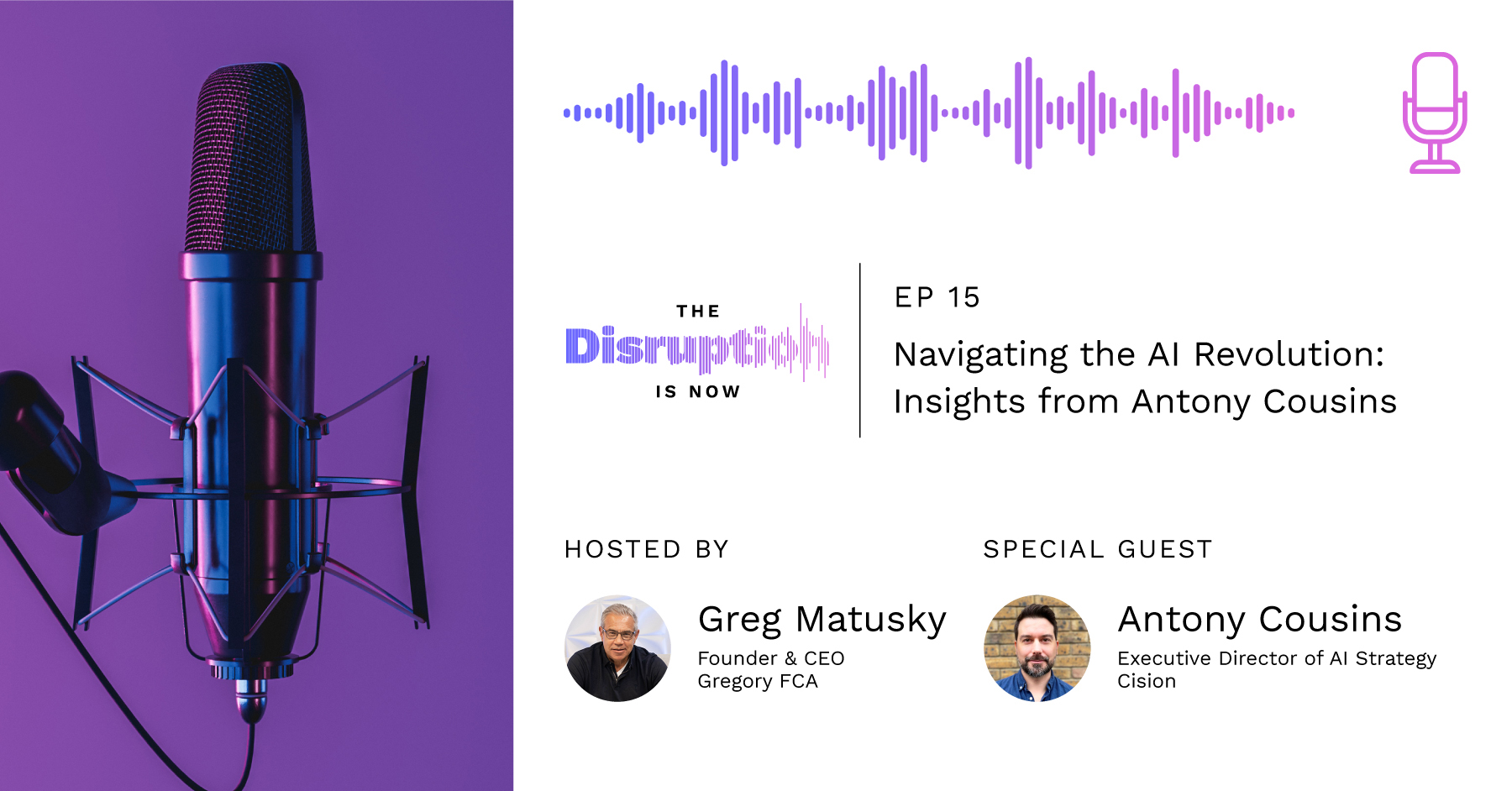The PR industry as we know it will be completely upended within five years. As hard as that is to believe for some industry veterans, rapid advances in generative AI point to workflow automation beyond anything previously imagined.
What does this mean for aspiring and current communications professionals and marketers? Will creativity, storytelling, and strategy remain the domain of humans, or will AI take over? The answer is more nuanced than you might think.
Antony Cousins, Executive Director of AI Strategy at Cision, has a front-row seat for many of these changes and their impact on PR. He joins host Greg Matusky on The Disruption Is Now to tackle these questions and more as they discuss AI’s existential threat to PR and the new possibilities it introduces for the industry.
From AI’s impact on creativity to the evolution of software to advice for students entering a workforce increasingly reliant on AI, Greg and Antony offer advice for everyone working or soon to be working in PR.
Watch now:
Key takeaways:
AI transforms PR workflow
Generative AI is completely transforming the public relations and communications industry. It can automate the creation of press releases, social media posts, op-eds, speeches, and more. But AI’s impact goes beyond just content.
It can reshape workflows for developing strategy, planning campaigns, preparing for crisis scenarios, brainstorming creative ideas, and other critical activities. This will eliminate friction and bottlenecks while augmenting human creativity.
AI is changing the role of software
While AI shows promise, there are still difficulties in integrating it seamlessly into workflows in a way that maximizes productivity. The underlying software architecture and interfaces need to rebalance the input needed from human and AI.
Many tools today are still designed around humans manually completing tasks with AI as just an add-on to assist in small ways. To truly take advantage of generative AI requires rethinking software to put AI at the center, doing the bulk of the labor, while humans provide guidance and editing.
Students should be building their AI skills
Students and young professionals looking to get into communications and marketing should proactively build their generative AI skills rather than avoiding tools like ChatGPT.
Given how rapidly the technology is evolving to transform content creation and ideation, AI expertise will likely become table stakes in the job market. However, solely relying on AI without interweaving one’s own creativity, critical thinking, and strategy could hamper your talents long-term or make your work more derivative. The ideal approach is using AI to augment your writing and creativity rather than fully replace it.
AI frees humans to focus on higher-level thinking
Rather than focus energy on lower-level writing mechanics like grammar, punctuation, and syntax, communicators should shift more attention to high-level strategic thinking surrounding objectives, messaging, and audience when using AI.
This unleashes more of their creative potential than manually churning through laborious, repetitive tasks. AI handles the technical aspects while humans provide the context and direction.
Key moments:
● How AI will impact storytelling and public relations (2:00)
● Using AI to improve workflow (4:00)
● AI is catering to use cases that have no software right now (5:44)
● The challenges of managing tailored GPTs (8:31)
● Why “prompt engineering” is a misnomer (11:08)
● Flipping the way software is built (12:00)
● The advantages of AI built for general purpose uses (13:42)
● How college students are using AI (16:40)
● Using AI to improve your writing without having it write for you (17:15)
● How to integrate AI into education (18:55)
● The neural pathways writers develop (21:06)
● Redefining knowledge and success in the age of AI (25:01)
● The value in spending more time clarifying what we’re trying to achieve (27:23)


